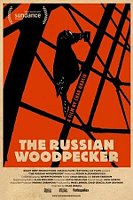
The Russian woodpecker was the nickname given to a rapid-fire shortwave
signal emitted during the cold war from the Duga radar in what is today’s
Ukraine. But was there a connection between Duga and 1986 disaster at the
nearby Chernobyl nuclear power station? That question is explored in a film
entitled The Russian Woodpecker currently being screened at the One World
festival of human rights documentaries in Prague. I discussed the subject
with producer Mike Lerner, a guest of East Doc Platform, which is organised
by the Institute of Documentary Film.
“They built this [Duga] antenna for a number of reasons. One was to
detect incoming nuclear weapons. But it was also designed to send radio
signals into America.
“The idea was that it might destabilise communications in that country
and perhaps even psychologically disturb the Americans and drive them all
crazy.
“Fortunately for America, this machine never worked properly. And one of
the incredible reasons that it didn’t work was that the signal couldn’t
get past the aurora borealis.
“So there was this curtain of colour that God created to protect America
somehow against this evil Russian weapon.”
The protagonist of the film is a Ukrainian artist called Fedor
[Alexandrovich]. Tell us about his relationship to the Duga radar, which
produced the Russian woodpecker.
“Fedor was about six years old when the accident [at Chernobyl]
happened.
“He was living in Kiev and was actually affected by this radiation and
suffered very greatly, physically and emotionally, from the effects of that
accident.
Data: 11.03.2016
Fonte: www.radio.cz



















Nessun commento:
Posta un commento